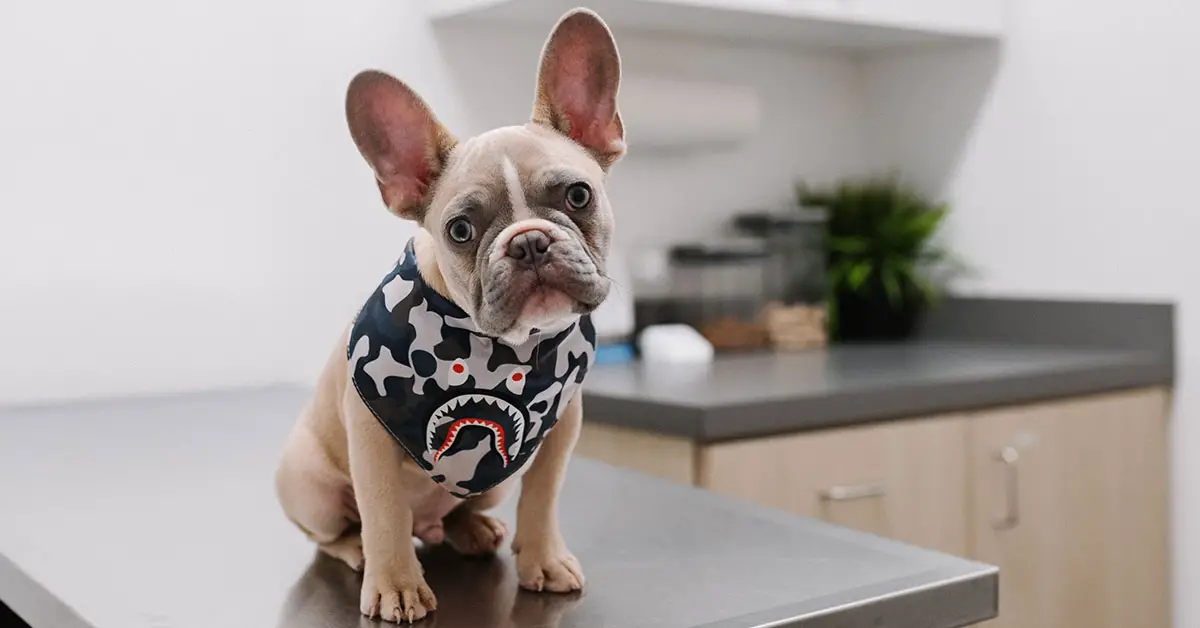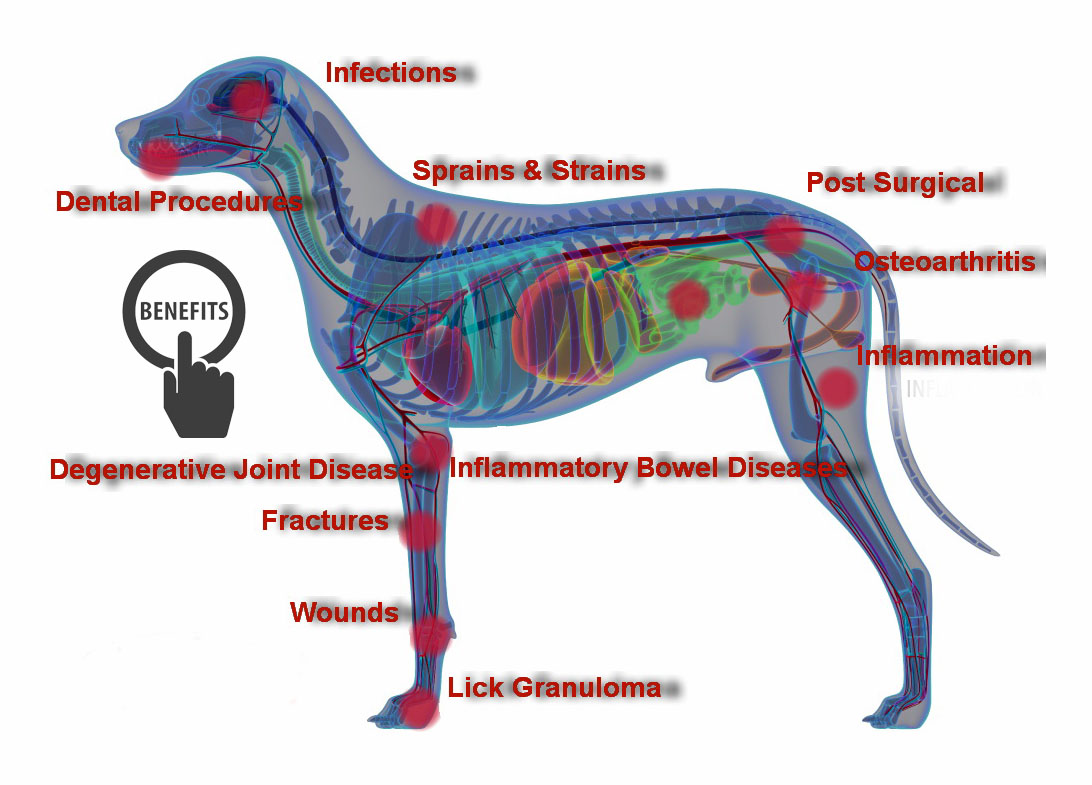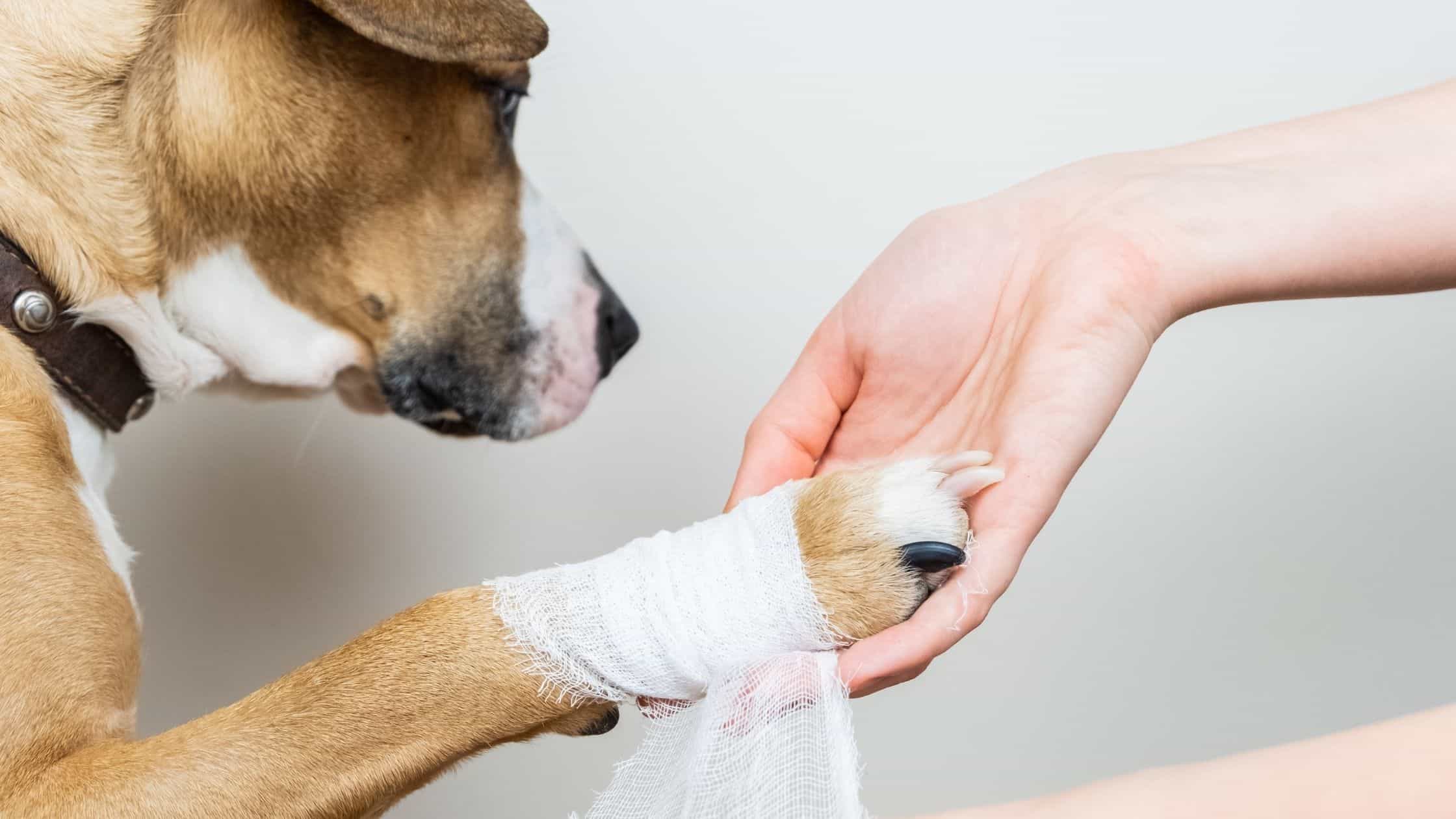Cold Laser Therapy For Dogs Is A New Way To Heal Your Dog’s Wounds

Scientific and technological progress has led to significant discoveries in physical science, among them the development of LASER technology (Light Amplification With Stimulated Emission).
But do you know low-level laser technologies (cold laser) also exist, which treat humans and treat dogs?
In the case of pets, it’s a great boon. But how is it used? What are its benefits? Does it heal wounds? Let’s get to know all answers to these questions.
What is Cold Laser Therapy?
Cold Laser Therapy or Low-level laser therapy (LLLT) is a low-frequency laser light that, when applied, triggers biochemical changes in cells to treat pain management and osteoarthritic conditions.
Other names of low-level laser therapy are cold laser therapy, veterinary laser therapy, and Class IV laser therapy.
It contains light waves, which, if performed correctly, increase blood flow that helps to relieve pain.
Benefits of Cold Laser Therapy (CLT)

Unfortunately, like humans, dogs can suffer from various ailments that cause pain and discomfort. And for relief from these ailments, dog laser therapy can help your dog in the following cases (in addition to the existing treatments).
As A Tool To Manage Pain
One of the significant benefits of cold laser therapy is pain relief. It reduces discomfort, especially in orthopedic conditions like arthritis and hip dysplasia.
In Reducing inflammation
It’s also known to reduce swelling, redness, and heat associated with inflammation, making it an ideal treatment for your dog’s post-surgical recovery.
Promote Wound Healing
Besides pain reduction, dog laser therapy can expedite the body’s natural healing process of wounds and traumatic injuries with increased blood circulation, making it an excellent choice for your pet’s recovery from surgery.
Recovery From Skin Diseases
It’s also helpful in treating skin conditions such as hot spots, dermatitis, and fungal infections.
Accelerates The Healing
By increasing blood flow, improving nerve function, and speeding up the recovery process from nerve damage is truly remarkable.
Energied Acupunture Points
It can even stimulate acupuncture points without using needles, a major boon for dogs that don’t like needles or the discomfort of acupuncture.
Helps In The costlier Dental Problems In Dogs
For pet owners with dental problems in dogs, cold laser therapy can alleviate pain and stimulate the healing process for gum and tooth problems.
When Shouldn’t Cold Laser Therapy Be Used?
In short, it’s always better to consult a veterinarian before applying cold laser therapy, especially if your pet has cancer or is pregnant. Also, laser therapy for dogs over open wounds is not advisable; otherwise, it may cause thermal burns to the tissues.
So, if you’re looking for safe, non-invasive, and effective treatment for your furry friend’s ailments, this laser treatment may be the best solution to improve their quality of life.
Is It Painful? How Will My Dog Feel During Laser Treatments?
If appropriately applied by an expert, it’s totally pain-free. No sound, irritation, or discomfort happens during the laser treatments.
The only thing the dog will feel is touching some device, for which, initially, he has to be put in a comfort zone. There will be neither vibration nor heat, making it noninvasive and painless.
Do You Know?
High-frequency surgical lasers are used to remove tumors, prevent blood loss by limiting blood flow, and for specific skin conditions
In What Conditions Can Low-Level Laser Therapy Help My Dog?
Like sunlights help plants grow and help us develop vitamin D through our skins, cold laser enters through the dog’s skin and provides multiple benefits. Technically, it’s called photobiomodulation and is suitable for all animals, regardless of age.
Let’s look at a few areas where the low level laser can be helpful for your dog.
- Joint Issues
Dogs, especially aged dogs, have knee problems caused by damaged tissue and ligament injuries. Knees and other joints can’t be best relieved with anything other than this technology. As per a famous vet,
“These are typically older dogs who are already on pain medication but may need an extra boost.” – Dr. MacDonald.
- Surgeries
Laser therapy treatments are also used during surgeries to heal the incision or surgical wounds rapidly. The most common example is surgeries for spaying or neutering a dog. And do you know the laser treatment starts even on the surgery bed, without waiting for the later visit?
- Dental Issues
Like other incisions, therapeutic lasers work well on teeth as well. In fact, vets use it too often to heal what occurs when a tooth is removed. So the recovery starts right after the incision is done. So getting your dog used to some dental chews is always recommended to prevent dental bad.
- Injuries

Some acute and chronic injuries are not visible but are as painful as visible ones. The best example might be your dog chasing a rabbit, and during a sudden turn, the dog gets his ankle sprained. Here laser therapy for dogs will help reduce inflammation and pain reduction.
- Drug-Free Treatment
Animals with liver disease who can’t take medicines are treated with these laser beams.
Is Laser Therapy Safe For Pets? Are There Any Side Effects Aftarwards?
Since cold laser therapy does not use any medication, syringes, or surgery, it’s considered safer for pets. In addition to being unharmful, it’s painless and hasn’t been reported to cause any side effects.
But there are a few factors, somehow or other, including health condition, age, or the severity of the injury, that affect whether the pet would be negatively affected by this laser beam.
As discussed above, dog laser therapy has hardly any side effects. Still, in rare situations, side effects have been reported, like redness and swelling of the area, irritation, change in skin color, etc. But the good thing is all of them go themselves without any effort.
Side effects of laser technology occur only when misused, like used on tumors. Also, it’s advised not to use this on pregnant dogs and cats.
Cost Of CLT
The cost of a cold laser is affordable as the cost starts from $8 just and goes as high as $35, which is totally justified by early recovery and pain reduction. (Muller veterinary hospital)
- For Oral treatments, vets charge $8 to $15
- For deep-seated and open flesh wound healing, $15 to $35
- For surgical procedures, including unusual growths, anal glands, orthopedics, etc., it’s $25 to $35
- For acute traumas resulting from road accidents, sprains, etc., the cold lasers cost $25 to $35
- For chronic conditions resulting from pre-existing injuries like a broken toe, $25 – $35
How Does It Work?
In this therapy, laser light with a low frequency (600-1000nm wavelength) is targeted with a handheld laser wand to the affected area from 6-8 inches.
During this massage therapy, both the person performing this and the dog wear protective goggles to prevent any side effects on the eyes.
When laser beams directed at the target skin or flesh starts working, biochemical changes within the dog cells trigger. In other words, this light energy stimulates cell regeneration. The cellular photoreceptors absorb photons which then start chemical changes in the living organism’s body, which block pain signals by stimulating nerve cells.
Many clinical and experimental trials have proved its benefits in analgesic and anti-inflammatory effects.
Therapy Session Duration And Frequency Of Sessions
Having got all the information pertinent to this therapy, the next question coming to your mind might be how many times you need to go to the vet for laser therapy and how much time will be required for therapy sessions.
Unlike treatments, it won’t take much time, as the only time required is to rub the device over the skin. Your dog remains calm without feeling any needling or numbness. Instead, the session feels like a warm and cozy sensation which the dogs enjoy.
A typical laser therapy session usually lasts from 15 to 30 minutes. The frequency of sessions depends upon the severity of the injury. If it’s a chronic condition, you must visit the vet once weekly, whereas surgical and open wounds need daily treatment.
The Bottom Line
Laser therapy is a newer yet popular low stress treatment for faster recovery of wounds, arthritis, and incision recovery. It helps the patients reduce pain and inflammation by activating the lymphatic drainage system. It can be called the modern form of massage, acupuncture, and other alternative therapies. But at the same time, it can’t be equivalent to pain medications, antibiotics, and other veterinary medicine your veterinarian advises. It’s cheaper, pain free, has the latest technology, and requires lesser sessions of it in normal cases.
Has your dog ever got cold laser treatment? If yes, how effective was it? let us know in the comments section below.
